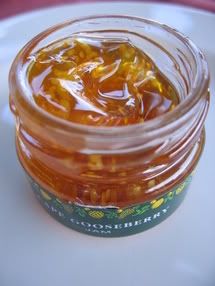Sunflowers
For me, life's not a beach. It's a farm.

This one belongs to my friend Eric. He grows lots and lots of different vegetables, using permaculture, biodynamic and organic principles.
But that's deserving of a whole different post. This post is all about a food that Eric doesn't grow to eat: sunflowers. And I'm not talking seeds here - flowers.
I saw this post a couple weeks ago, and so when I visited Eric last week, and saw he had a couple sunflowers bobbing in the breeze, I told him about it. He was slightly skeptical, but as always, indulgent of my flights of fancy. So he waded into a field of flowering lettuce and picked one for me, most gallantly (I promised not to tell his wife he was picking flowers for another woman). So I took it home. And stared at it a bit.

Big Spoon stared at it rather doubtfully, too, and carried on making supper (it's his snazzy brown fleece you can see in the background). So I set to work, as best as I could considering I'd never trimmed, cooked or ate a sunflower before.
I'd read that sunflowers taste a lot like artichokes, and like artichokes, there wasn't much left after all the petals and calyx and seeds were trimmed off, but I braised it nonetheless in a pan of water with a good shot of cider vinegar, a bay leaf, a pinch of salt, pepper and sugar and some coriander seeds. A sort of sunflower giardiniera, or a la greque, if you will. It looked like this:

So I sliced it finely and tossed it with green beans and pasta, for supper. It did indeed taste quite a lot like artichokes, in their tangy, mushroomy glory, only slightly sweeter. In hindsight, I think you need to be even more ruthless, and cut off all of the seed layer (roughly half of the height of the braised sunflower 'heart' you see above), which is edible, but a bit... fluffy and strawlike. So next time, it makes sense to start off with the largest sunflower you can find. Or stuff it as they do here, so it's bit more substantial.
Labels: sunflowers
+of+IMG_0354.JPG)
